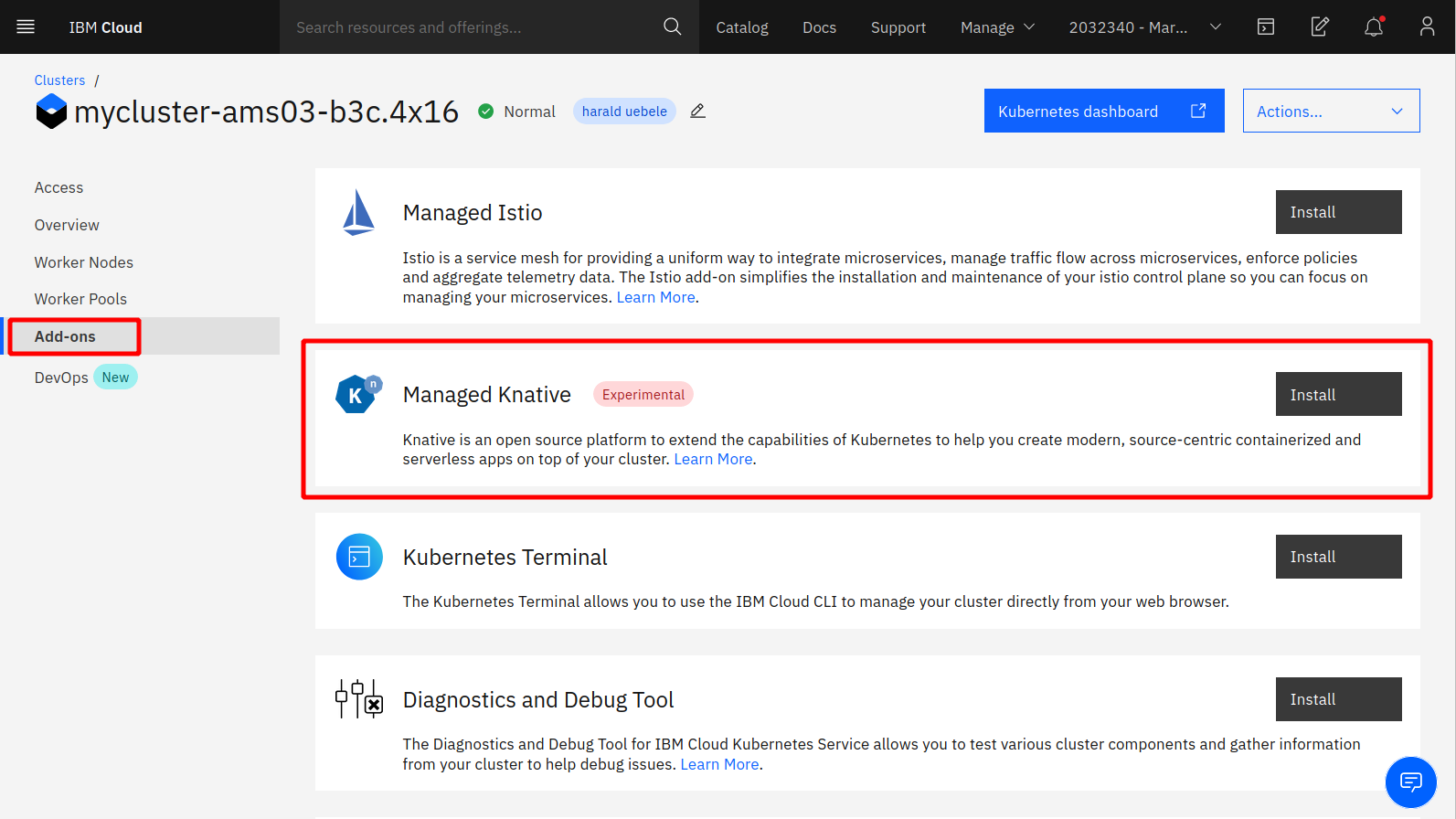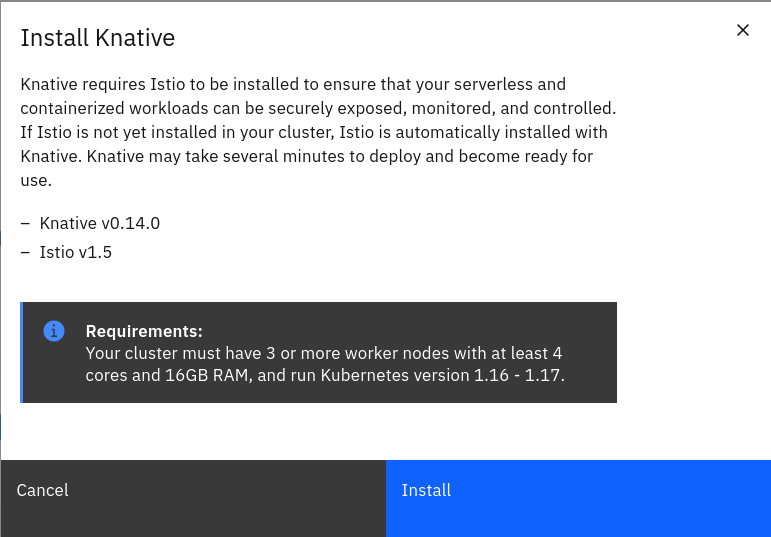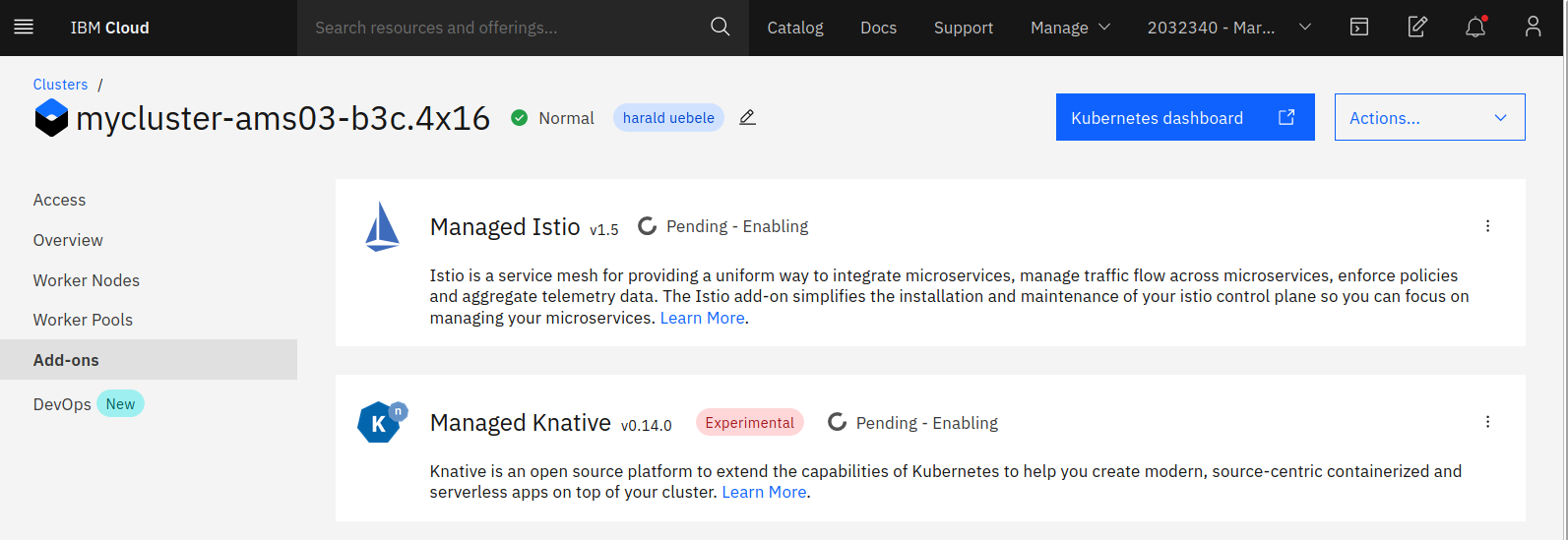Installing Knative
Knative requires a networking layer with an Ingress that is not part of the Knative installation itself. There are several options, Istio is one of them, another one is Kourier which is actually maintained now by the Knative project. Others are Ambassador, Contour, Glue, and Kong. Red Hat OpenShift Serverless, the OpenShift version of Knative, uses Kourier. We will use Istio in this lab, it is already available on the IBM Cloud.
The Kubernetes cluster that has been assigned to you and that you will use during this workshop is provided by the IBM Cloud Kubernetes Service, IKS.
IKS offers add-ons to Kubernetes, namely Istio and Knative. They will be automatically installed and managed by IBM. There is a cluster size requirement for Istio (minimum 3 worker nodes) which is also applicable to Knative because it requires Istio. The pre-provisioned clusters meet the requirement. Installing the Knative add-on automatically installs Istio if required.
-
To install Knative, go to the ‘Add-ons’ page of your cluster:

-
Click on ‘Install’, this will inform you about the version of Istio and Knative:

-
Click ‘Install’ again, after a moment, the ‘Install’ buttons for Istio and Knative will disappear and a status for the installation will show:

-
The installation status will show a green check mark and “Normal - Addon Ready” when Knative and Istio have been installed successfully.
-
In the IBM Cloud Shell check the Kubernetes namespaces:
kubectl get nsOutput:
NAME STATUS AGE default Active 18h ibm-cert-store Active 18h ibm-operators Active 18h ibm-system Active 18h istio-system Active 12m knative-eventing Active 12m knative-serving Active 12m knative-sources Active 12m kube-node-lease Active 18h kube-public Active 18h kube-system Active 18h tekton-pipelines Active 12mNotice ‘istio-system’ and the namespaces starting with ‘knative-‘
If you like check the pods in each of these namespaces.
Continue with the next part Deploy a Knative Service